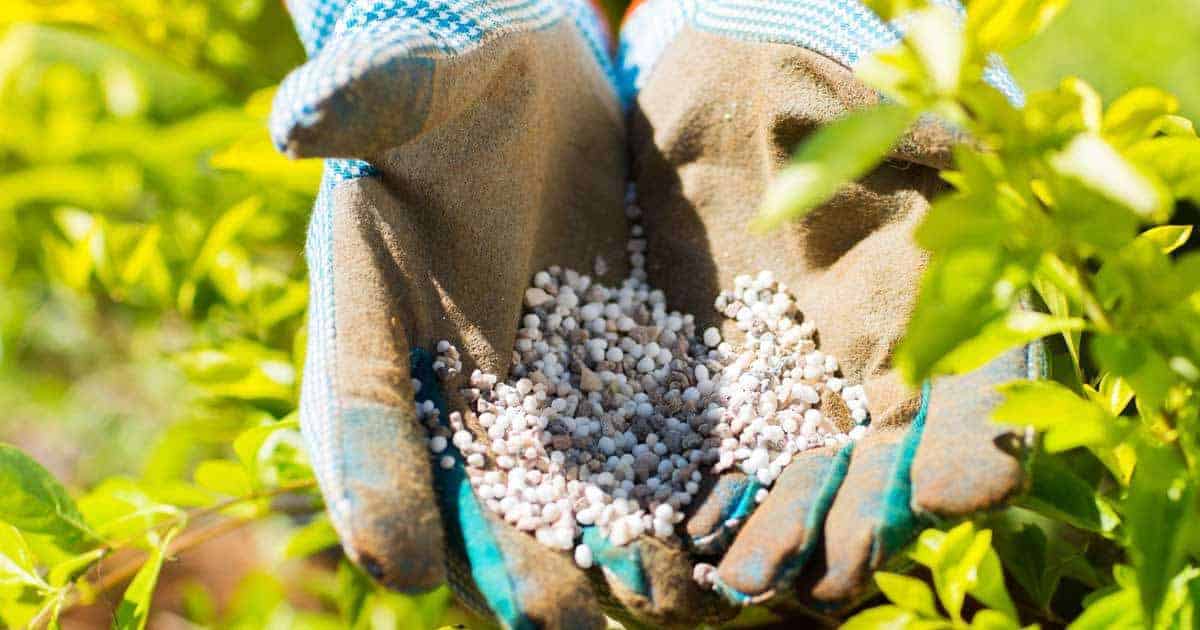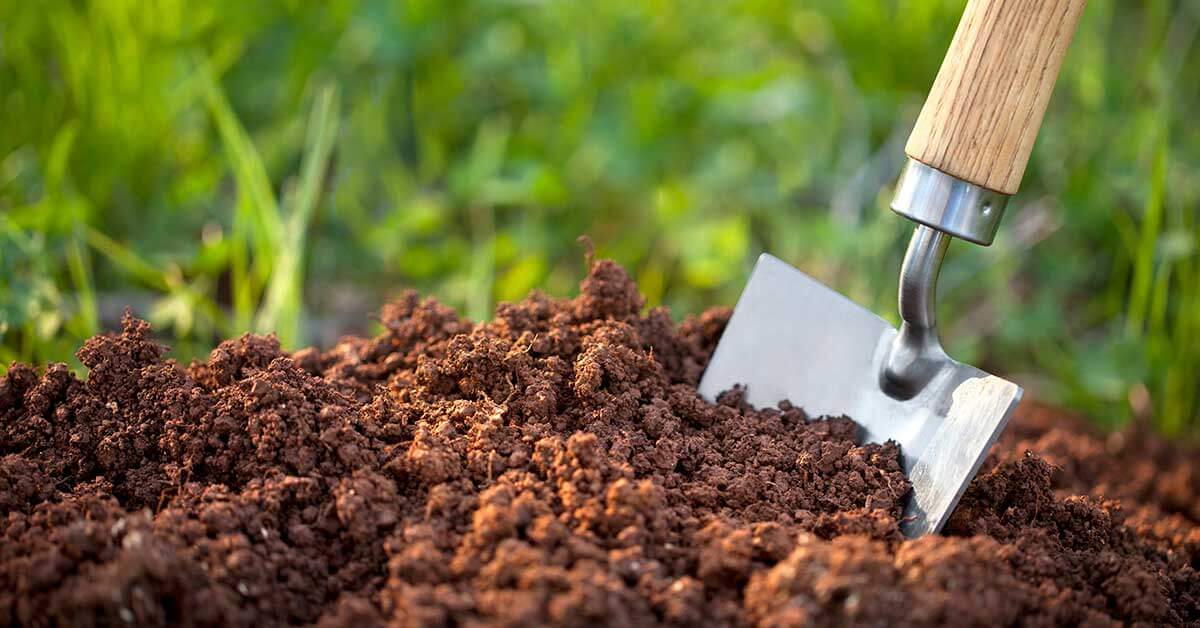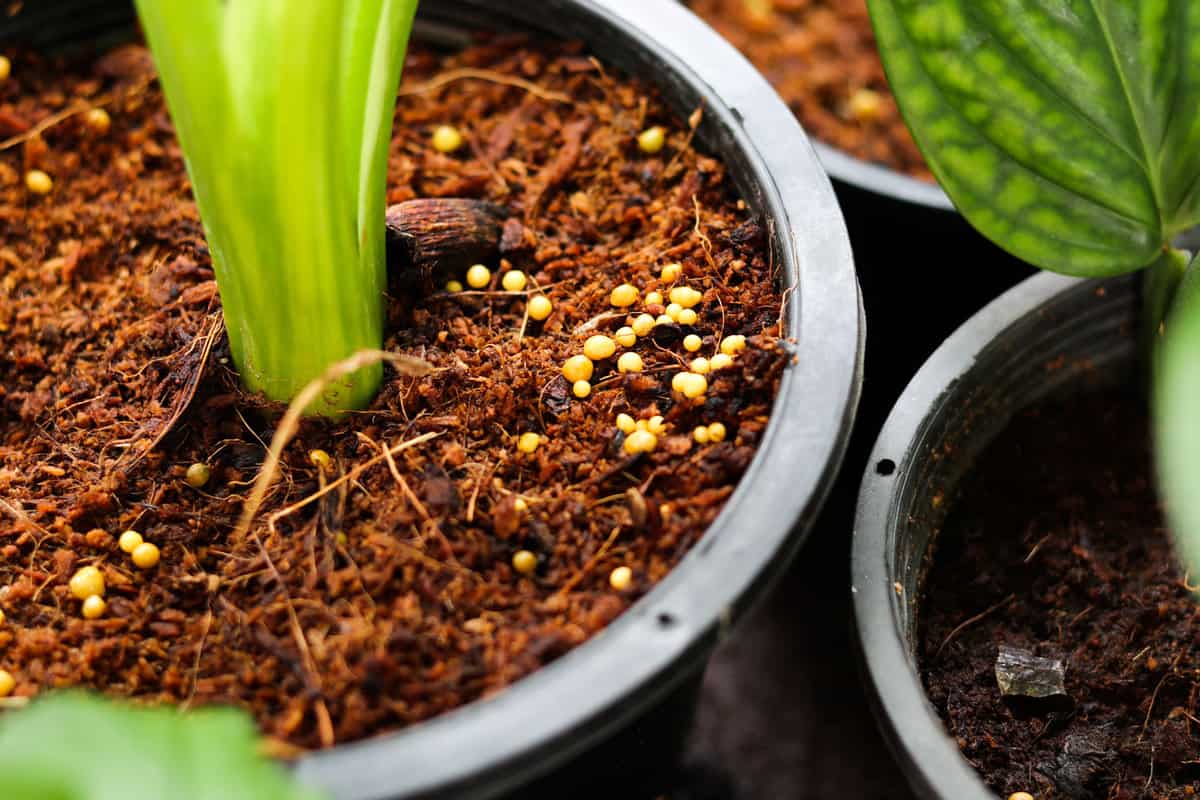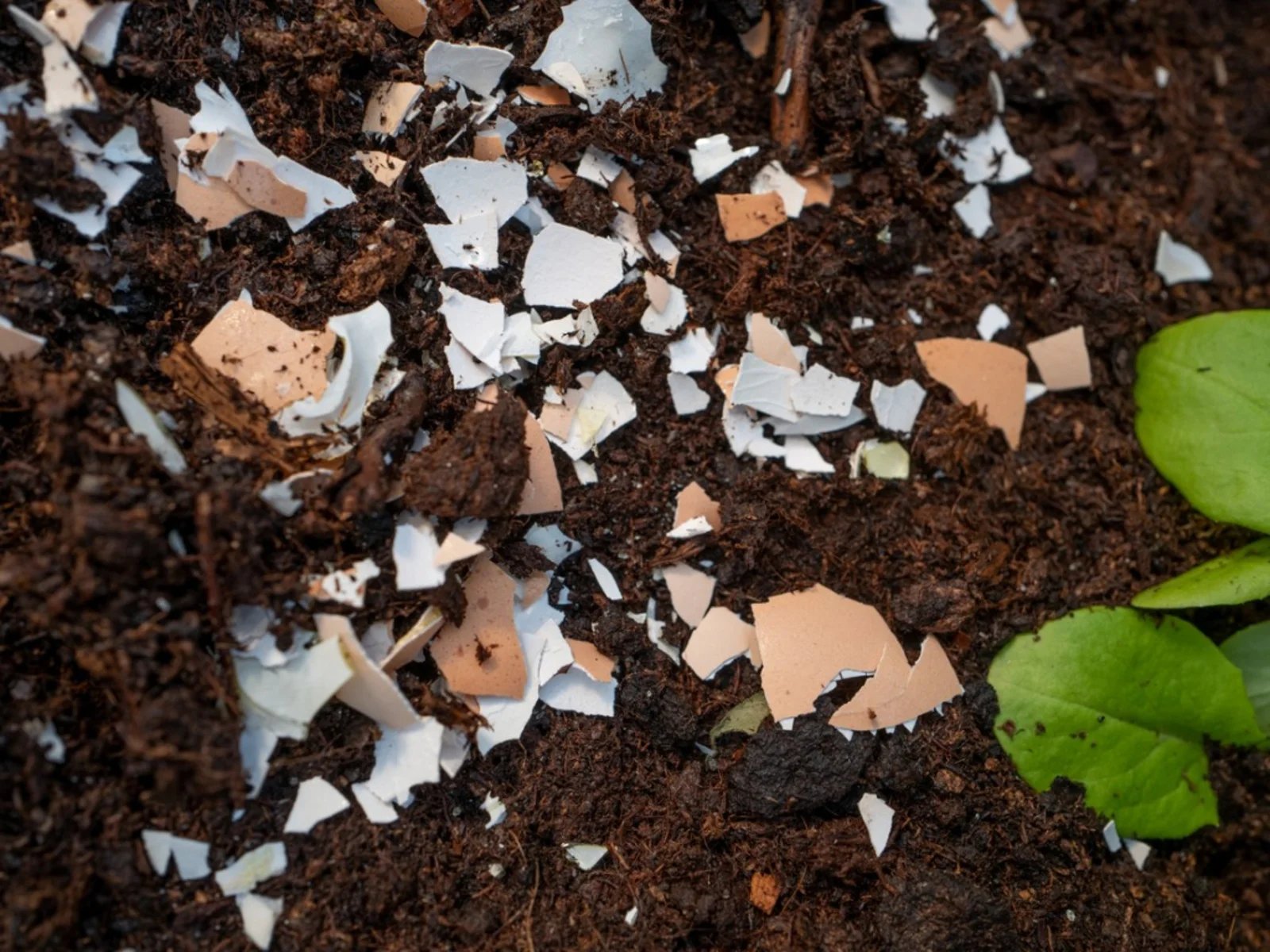Home>Types of Gardening>Edible Gardening>How To Use Mustard Seeds


Edible Gardening
How To Use Mustard Seeds
Modified: January 22, 2024
Learn how to use mustard seeds in your edible gardening journey. Explore tips, techniques, and recipes for incorporating this versatile ingredient into your dishes.
(Many of the links in this article redirect to a specific reviewed product. Your purchase of these products through affiliate links helps to generate commission for Chicagolandgardening.com, at no extra cost. Learn more)
Table of Contents
Introduction
Welcome to the world of edible gardening! If you have a passion for growing your own food, then you’re in the right place. Edible gardening is a rewarding and sustainable practice that allows you to connect with nature, save money, and enjoy the freshest ingredients right from your backyard. One essential aspect of edible gardening is knowing how to use various herbs, spices, and seeds to add flavor and nutrition to your culinary creations.
In this article, we’ll dive into the fascinating world of mustard seeds. Mustard seeds are small, round seeds that come from the mustard plant. They have a rich history in culinary traditions and are renowned for their distinct flavor and numerous health benefits. Whether you’re a seasoned chef or a novice in the kitchen, mustard seeds can be a versatile and exciting addition to your pantry.
But why are mustard seeds so special? Well, not only do they bring a delightful tang to your dishes, but they are also packed with nutrients. Mustard seeds are a great source of vitamins, minerals, and antioxidants. They are rich in omega-3 fatty acids, which are essential for heart health. Additionally, mustard seeds contain compounds that have antimicrobial and anti-inflammatory properties, making them a valuable ingredient for maintaining overall well-being.
Throughout this article, we’ll explore the many culinary uses of mustard seeds. From making homemade mustard paste to using them in pickling and enhancing the flavors of your favorite dishes, we’ll cover it all. We’ll also delve into the medicinal properties of mustard seeds, as they have been a part of Ayurvedic medicine for centuries.
So, get ready to discover the wonders of mustard seeds and learn how to incorporate them into your edible gardening and cooking adventures. Let’s unlock the secrets of this humble yet remarkable spice and experience the bold and enticing flavors it has to offer!
Benefits of Mustard Seeds
Mustard seeds have long been recognized for their impressive health benefits. Rich in nutrients and bioactive compounds, these tiny seeds can contribute to your overall well-being. Here are some of the key benefits of incorporating mustard seeds into your diet:
1. Rich in Nutrients: Mustard seeds are a powerhouse of vitamins and minerals. They are a good source of vitamin B1, B3, and B6, which are important for energy production and brain function. They also contain essential minerals like magnesium, calcium, and iron.
2. Heart Health: Mustard seeds are rich in omega-3 fatty acids, which are known to promote heart health. These healthy fats help lower cholesterol levels, reduce inflammation, and improve blood flow.
3. Anti-Inflammatory Properties: Mustard seeds contain compounds like selenium and magnesium, which have potent anti-inflammatory effects. Regular consumption of mustard seeds may help reduce inflammation in the body and alleviate symptoms of conditions like arthritis.
4. Antioxidant Activity: The presence of antioxidants in mustard seeds helps protect cells from oxidative damage caused by free radicals. These antioxidants, such as flavonoids and carotenoids, play a crucial role in maintaining overall health and reducing the risk of chronic diseases.
5. Digestive Health: Mustard seeds have been traditionally used to improve digestion. They stimulate the production of digestive enzymes, which aids in the breakdown and absorption of nutrients. Additionally, mustard seeds are high in dietary fiber, which promotes regular bowel movements and prevents constipation.
6. Weight Management: Including mustard seeds in your diet can be beneficial for weight management. The fiber content in these seeds helps you feel fuller for longer, reducing overeating and cravings.
7. Cancer Prevention: Mustard seeds contain compounds like glucosinolates, which have been associated with a reduced risk of certain cancers, including colorectal, lung, and bladder cancers. These compounds have anti-cancer properties and may help inhibit the growth of cancer cells.
These are just a few of the remarkable benefits that mustard seeds offer. Their nutrient profile and therapeutic properties make them a valuable addition to a healthy diet. Now that we’ve explored their benefits, let’s move on to the exciting culinary uses of mustard seeds.
Culinary Uses of Mustard Seeds
Mustard seeds can add a burst of flavor and texture to a variety of culinary creations. These versatile seeds are commonly used for their distinct tangy taste and aromatic qualities. Here are a few exciting ways to incorporate mustard seeds into your cooking:
1. Tempering: Mustard seeds are often used in Indian cuisine for tempering. Heat some oil or ghee in a pan and add mustard seeds. As they start to sizzle and pop, they release their distinctive nutty and earthy aroma, enhancing the flavors of the dish. This technique is commonly used in dal, curries, and vegetable stir-fries.
2. Homemade Mustard Paste: Mustard seeds are the key ingredient in making homemade mustard paste. Grind mustard seeds with water, vinegar, and other spices of your choice to create a flavorful and tangy condiment. This homemade mustard paste can be used as a spread, added to dressings, or incorporated into marinades for meats and vegetables.
3. Pickling: Mustard seeds can be used in pickling to add a zesty and tangy flavor. Combine mustard seeds with vinegar, spices, and your choice of vegetables to create a delicious and crunchy pickle. Mustard seed pickles are a popular accompaniment to sandwiches, salads, and cheese platters.
4. Seasoning: Toasted and crushed mustard seeds make a delightful seasoning. Dry roast the seeds in a pan until they turn slightly brown and release a warm aroma. Grind them into a fine powder and use it as a seasoning for roasted vegetables, meats, or even popcorn.
5. Bread and Baking: Mustard seeds can be added to bread dough or used as a topping to give a unique flavor profile. Sprinkle mustard seeds on top of your homemade bread or incorporate them into savory muffins for an extra kick of flavor.
6. Marinades and Rubs: Crushed mustard seeds can be combined with other spices, herbs, and oil to create flavorful marinades and rubs for meats, poultry, or even tofu. The mustard seeds add depth and complexity to the marinade, infusing the dish with a savory and tangy taste.
7. Soups and Stews: Mustard seeds can be added to soups and stews to add a subtle yet distinctive flavor. They work particularly well in lentil soups, bean stews, and hearty vegetable soups.
These are just a few examples of how mustard seeds can be used in culinary applications. Feel free to experiment and discover your own unique ways to incorporate these versatile seeds into your cooking. Now that we’ve explored the culinary uses, let’s move on to the process of making mustard paste from scratch.
Making Mustard Paste
If you’ve ever wanted to create your own homemade mustard paste, look no further. Making mustard paste from scratch is easier than you might think, and it allows you to customize the flavors and intensity to suit your taste preferences. Here’s a simple step-by-step guide:
1. Gather the Ingredients: You will need mustard seeds, water, vinegar (such as white wine vinegar or apple cider vinegar), salt, and optional flavorings like garlic, honey, or herbs.
2. Choose the Mustard Seeds: Mustard seeds come in various varieties, such as yellow, brown, and black. Each variety has its own unique flavor profile. You can choose a single variety or create a blend of different seeds to achieve the desired taste.
3. Soak the Mustard Seeds: Place the mustard seeds in a bowl and cover them with water. Allow them to soak for at least 2 hours or overnight. This step softens the seeds and makes them easier to grind.
4. Drain and Grind: Drain the soaked mustard seeds and transfer them to a blender or food processor. Add vinegar, salt, and any optional flavorings you desire. Start with a small amount of liquid, and you can adjust the consistency later if needed. Blend until you achieve a smooth paste. If you prefer a grainy texture, blend for a shorter duration.
5. Adjust Consistency and Flavor: Check the consistency of the mustard paste. If it’s too thick, you can add more water or vinegar. Taste the paste and adjust the flavors by adding more salt, vinegar, or optional ingredients according to your preference. Remember that the flavors will develop and mellow over time, so it’s okay if it tastes a bit strong at first.
6. Store and Age: Transfer the mustard paste into a clean, airtight jar or container. Seal it properly and store it in the refrigerator. Mustard paste benefits from aging, as the flavors meld together and mellow out over time. Allow it to sit for at least 24 hours before using to achieve a well-rounded flavor.
Your homemade mustard paste is now ready to be enjoyed! Use it as a spread on sandwiches, mix it with dressings, or incorporate it into marinades and sauces. Experiment with different flavors and combinations to create your own unique twist on traditional mustard paste.
Now that you know how to make your own mustard paste, let’s explore another exciting way to use mustard seeds in food preservation – pickling!
Using Mustard Seeds in Pickling
Pickling is a popular food preservation technique that not only extends the shelf life of vegetables but also adds a delightful tanginess to them. Mustard seeds can play a key role in pickling, bringing their distinct flavor and texture to the preserved vegetables. Here’s how you can use mustard seeds in pickling:
1. Select Your Vegetables: Choose vegetables that are suitable for pickling, such as cucumbers, carrots, cauliflower, green beans, or bell peppers. Wash and prepare the vegetables by cutting them into uniform sizes.
2. Create a Brine: Start by making a brine solution. In a saucepan, combine water, vinegar, salt, and any desired sweeteners like sugar or honey. You can also add pickling spices like cloves, peppercorns, or bay leaves for additional flavor. Bring the brine to a boil, stirring until the salt and sweeteners dissolve. Let the brine cool to room temperature.
3. Add Mustard Seeds: Once the brine has cooled, it’s time to incorporate the mustard seeds. Measure out the desired amount of mustard seeds and add them to the brine. The quantity of mustard seeds can vary depending on your taste preferences. Generally, 1 tablespoon of mustard seeds per pint-sized jar is a good starting point.
4. Pack the Jars: Place the prepared vegetables into clean, sterilized jars. Pour the brine and mustard seed mixture over the vegetables, ensuring that they are fully submerged. Leave about a ¼ inch of headspace at the top of each jar to allow for expansion during the pickling process.
5. Seal and Store: Wipe the rims of the jars with a clean, damp cloth and seal them tightly with sterilized lids and bands. Label the jars with the date and store them in a cool, dark place, such as a pantry or cellar, for the pickling process to take place. The flavors will develop and intensify over time.
6. Allow for Pickling: The time it takes for the vegetables to pickle and develop their flavors varies depending on the vegetable and your personal preference. Some vegetables may require a few days, while others may take a few weeks or longer. Check the jars periodically, and once you’re satisfied with the taste and texture, move them to the refrigerator for long-term storage.
Using mustard seeds in pickling adds a unique flavor note and texture to the preserved vegetables. The mustard seeds infuse the brine, giving it a tangy and slightly spicy taste. Enjoy your homemade pickles in sandwiches, salads, or as a tangy side dish to complement various meals.
Now that we’ve explored the pickling process, let’s move on to discover how mustard seeds can enhance the flavors of your favorite dishes.
Enhancing Flavors with Mustard Seeds
Mustard seeds are not only known for their distinctive flavor but also for their ability to enhance the taste of various dishes. These tiny seeds can add complexity, depth, and a delightful kick to your culinary creations. Here are some ways mustard seeds can enhance the flavors of your favorite dishes:
1. Spice Rubs and Marinades: Create flavorful spice rubs and marinades by incorporating mustard seeds. Crushed or ground mustard seeds can be mixed with other spices and herbs to create a flavorful blend. Use it to season meats, poultry, or vegetables before grilling, roasting, or baking. The mustard seeds add a zesty and slightly pungent kick, enhancing the overall taste of the dish.
2. Tempering: Mustard seeds are often tempered in hot oil or ghee to release their nutty and aromatic flavor. This technique is commonly used in Indian cooking. Add tempered mustard seeds to your dal, curries, or stir-fries to elevate their taste. The popping and crackling sound of mustard seeds in the hot oil is not only pleasing to the ears but also signals the infusion of flavors.
3. Sauces and Dressings: Mustard seeds can be ground into a paste and added to sauces and dressings for a tangy and vibrant flavor. Whether it’s a tangy mustard vinaigrette for salads or a zesty mustard sauce for sandwiches or burgers, the addition of mustard seeds can take your dressings and sauces to another level.
4. Sautéed Vegetables: Mustard seeds can be added to sautéed vegetables to bring extra depth and flavor. Heat oil in a pan, add mustard seeds, and let them sizzle and release their aroma. Then, toss in your favorite vegetables and cook until they are tender and infused with the tangy taste of the mustard seeds.
5. Roasted Nuts or Seeds: Sprinkle mustard seeds on roasted nuts or seeds to add a unique and spicy twist. Whether you’re roasting almonds, peanuts, or pumpkin seeds, the addition of mustard seeds can create a crunchy and flavorful snack.
6. Pickles and Chutneys: Mustard seeds are a popular ingredient in pickles and chutneys due to their tanginess and ability to enhance other flavors. Ground mustard seeds can be added to pickling recipes to add a sharp and tangy taste. In chutneys, mustard seeds provide a depth of flavor that pairs well with fruits, herbs, and spices.
7. Stir-Fries and Rice Dishes: Mustard seeds can be sprinkled over stir-fried vegetables or added to rice dishes to give them a burst of flavor. They provide a subtle heat and a pop of crunch, enhancing the overall taste and texture of the dish.
These are just a few examples of how mustard seeds can enhance flavors and elevate the taste of your favorite dishes. So, don’t hesitate to experiment and incorporate these versatile seeds into your cooking to experience the delightful and bold flavors they have to offer.
Now let’s explore another dimension of mustard seeds – their role in Ayurvedic medicine.
Mustard Seeds in Ayurvedic Medicine
Ayurveda, the ancient holistic healing system from India, has recognized the medicinal properties of mustard seeds for centuries. Mustard seeds are highly esteemed in Ayurvedic medicine for their therapeutic benefits and are used to address a variety of health concerns. Here are some ways mustard seeds are incorporated into Ayurvedic practices:
1. Digestive Aid: Mustard seeds are known to stimulate digestion and improve overall gut health. They help increase the production of digestive enzymes, promoting efficient digestion and nutrient absorption. Consuming mustard seeds in moderation can help alleviate issues like indigestion, flatulence, and bloating.
2. Respiratory Health: Mustard seeds have expectorant properties that can help relieve respiratory congestion and clear phlegm. Ayurvedic practices often recommend using mustard seed poultices or steam inhalations to ease symptoms of coughs, colds, and chest congestion.
3. Detoxification: Mustard seeds are believed to have detoxifying properties that aid in eliminating toxins from the body. Ayurvedic practitioners may recommend mustard seed-based remedies to support liver function and enhance the body’s natural detoxification processes.
4. Pain Relief: Mustard seeds contain compounds with anti-inflammatory properties that can help reduce pain and inflammation. Mustard oil, derived from mustard seeds, is often used in Ayurvedic massage to alleviate joint pain, muscle soreness, and arthritis symptoms.
5. Stimulating Circulation: Mustard seeds are known to have stimulant properties that can enhance blood circulation. In Ayurveda, mustard seed poultices or warm mustard oil massages are used to improve blood flow and relieve conditions like poor circulation and muscle cramps.
6. Warmth and Stimulation: Mustard seeds are considered to have a warming effect on the body according to Ayurvedic principles. This warmth can help stimulate metabolism, aid digestion, and provide relief from symptoms of cold and stagnant energy.
7. Antimicrobial Properties: Mustard seeds possess antimicrobial properties that may help combat bacterial and fungal infections. Ayurvedic practitioners might recommend mustard seed-based remedies for skin conditions like ringworm, athlete’s foot, or other topical infections.
It’s important to note that while mustard seeds have been traditionally used for their medicinal properties, it’s always advisable to consult with a qualified Ayurvedic practitioner or healthcare professional before using them for therapeutic purposes. They can provide specific guidance based on your unique constitution and health condition.
Now that we’ve explored the role of mustard seeds in Ayurvedic medicine, it’s crucial to be aware of certain precautions and potential side effects.
Precautions and Side Effects
While mustard seeds offer numerous health benefits, it’s important to be aware of certain precautions and potential side effects when consuming or using them. Here are some considerations to keep in mind:
1. Allergy: Some individuals may be allergic to mustard seeds. If you have a known mustard seed allergy, it’s crucial to avoid consuming or using any products containing mustard seeds.
2. Gastrointestinal Issues: Mustard seeds, when consumed in excessive amounts, can irritate the lining of the stomach and intestines, leading to digestive discomfort. Moderation is key, and it’s best to consult with a healthcare professional if you have any pre-existing gastrointestinal conditions.
3. Topical Sensitivities: Mustard oil or poultices made from mustard seeds may cause skin irritation or allergic reactions in some individuals. It’s important to perform a patch test before applying mustard seed-based products to the skin and discontinue use if any adverse reactions occur.
4. Caution during Pregnancy: Pregnant women should consume mustard seeds in moderation. Excessive intake of mustard seeds may stimulate the uterus and cause contractions, which can be harmful during pregnancy. It’s best to consult with a healthcare professional before including mustard seeds in the diet during pregnancy.
5. Interaction with Medications: Mustard seeds may interact with certain medications, such as blood thinners or anticoagulants. The high vitamin K content in mustard seeds can potentially interfere with these medications. If you are taking any medications, it’s essential to check with your healthcare provider for potential interactions.
6. Moderation is Key: While mustard seeds offer various health benefits, it’s important to consume them in moderation. Excessive intake may lead to digestive issues, gastric discomfort, or adverse reactions.
It’s always advisable to consult with a healthcare professional, especially if you have any pre-existing medical conditions, are taking medications, or have concerns about incorporating mustard seeds into your diet or wellness routine.
Now that we’ve explored the precautions and potential side effects of mustard seeds, let’s wrap up this article by reflecting on the versatility and benefits of incorporating mustard seeds into your edible gardening and culinary endeavors.
Conclusion
Mustard seeds are truly a remarkable ingredient that adds a burst of flavor, nutrition, and therapeutic properties to your edible gardening and culinary adventures. From their versatile use in cooking, such as tempering, making mustard paste, and pickling, to their role in Ayurvedic medicine, mustard seeds offer a range of benefits to enhance your overall well-being.
These tiny seeds bring a tangy and zesty taste to your dishes, whether used as a spice rub, in dressings, or to add a delightful crunch to sautéed vegetables. The process of making mustard paste from scratch allows you to customize the flavors according to your preferences, enabling you to create your own unique condiment.
Mustard seeds are not only flavor powerhouses but also packed with nutrients, antioxidants, and beneficial compounds that promote heart health, aid digestion, and have anti-inflammatory properties. They have been embraced in Ayurvedic medicine for their digestive, respiratory, and detoxifying benefits.
As with any ingredient, it’s important to exercise caution and be mindful of potential allergies, gastrointestinal sensitivities, and interactions with medications. Moderation is key, especially during pregnancy or if you have any underlying health conditions.
So, whether you’re an avid gardener looking to expand your edible garden or a culinary enthusiast eager to experiment with flavors, incorporating mustard seeds into your repertoire is a wonderful way to elevate your dishes and embrace the vast potential of these small but mighty seeds.
Let mustard seeds be your companion in your edible gardening journey, as you discover the joy of nurturing plants and harvesting their bounties. Embrace their unmistakable flavor and health benefits as you create delicious dishes in your kitchen. With mustard seeds, the possibilities are endless, and your culinary creations are sure to impress.
So, roll up your sleeves, gather your ingredients, and let the journey with mustard seeds begin!








